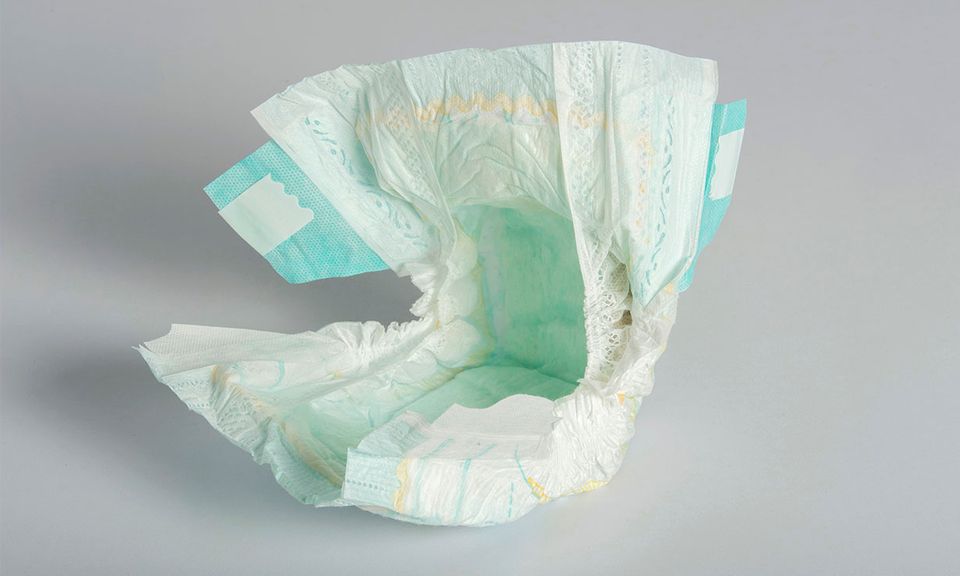
The Health Risks of Disposable Nappies: What Every Parent Should Know
Share
In the whirlwind of parenting decisions, the choice between disposable and cloth nappies might seem inconsequential. After all, disposable nappies are convenient, right? However, beneath their convenience lies a hidden world of health risks that every parent should be aware of. From chemical exposure to respiratory problems, the potential dangers of disposable diapers are significant. In this article, we'll delve into the scientific research behind these concerns and explore why cloth nappies are a healthier choice for your little one.

Chemical Exposure:
Dioxins - Disposable nappies contain a cocktail of chemicals, some of which pose serious health risks to babies. Dioxins, produced during the chlorine bleaching process, are among the most concerning. These toxic compounds have been linked to birth defects, skin diseases, and even liver damage. According to the Environmental Working Group (EWG), dioxins have been detected in some disposable nappies, raising alarms about their long-term effects on children's health.
Phthalates, used to make plastics flexible, are another culprit found in disposable nappies. These endocrine disruptors can interfere with hormonal balance and development in children, potentially leading to a range of health issues.
Sodium Polyacrylate Gel, the super-absorbent substance found in disposable nappies, has a troubling history. Banned from use in tampons due to its link to Toxic Shock Syndrome, this chemical has been associated with severe nappy rash and even bleeding of perineal and scrotal tissue. Additionally, it poses a lethal threat to pets when inhaled.
Volatile Organic Compounds (VOCs), present in some disposable nappies, can cause respiratory problems and skin irritation. These compounds add another layer of concern for parents already worried about their child's well-being.
Tributyltin (TBT), ranked as one of the most toxic substances in consumer products by the World Health Organization, is yet another troubling chemical found in some disposables. Its function to kill bacteria comes at a high cost, as it has been linked to hormone disruption and poses potential risks to children's health.
Quaternary Ammonium. Most wetness indicators include dye or a pH indicator within a carrier matrix. When urine contacts the dye or pH strip, the colour is either intensified or altered, indicating that it is time for a nappy change. Although the exact composition may vary, many of the carrier matrixes used in wetness indicators are composed of harmful chemicals, including quaternary ammonium compounds, or quats, and halogenated organic compounds associated with several health concerns, including reproductive and developmental problems, dermal irritation and respiratory effects, including asthma.

Impact on Development:
The use of disposable nappies may also impact the normal development of a baby boy’s reproductive system. The plastic lining of disposable nappies can increase scrotal temperature, impairing the normal cooling mechanisms of the testicles. Studies suggest that this could affect normal scrotal development, potentially impacting fertility later in life.
Respiratory Issues:
Asthma is a significant concern associated with disposable nappies. Chemical emissions from some disposable nappies have been found to have immediate health effects in animals, leading to respiratory problems. While more research is needed to confirm these effects in humans, the potential risks are enough to warrant caution from parents and healthcare professionals alike.
Allergic Reactions:
Fragrances, dyes, and other additives in disposable nappies can trigger allergic reactions and skin irritation in babies. Some studies have even linked nappy dyes to allergic dermatitis, further highlighting the potential risks of these products.
Cloth Nappies as a Safer Alternative:
Given the myriad health risks associated with disposable nappies, many parents are turning to cloth nappies as a safer alternative. Cloth nappies use safer materials and eliminate exposure to harmful chemicals, offering peace of mind to parents concerned about their child's health.
Conclusion:
Choosing the right nappy for your baby is about more than just convenience - it's about prioritizing their health and well-being. The scientific evidence against disposable nappies is clear: they pose health risks to our children, from chemical exposure to respiratory problems and beyond. By opting for cloth nappies, parents can reduce their child's exposure to harmful chemicals and promote a healthier, safer environment for their little one to thrive in.

Studies and research articles specifically focusing on disposable diapers:
These studies provide specific evidence regarding the presence of harmful substances in disposable diapers and their potential health effects on infants.
